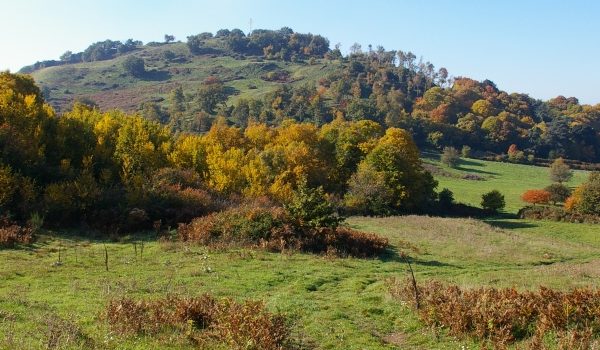From a geographical point of view, the territory commonly known as the “Castelli Romani” corresponds to the volcanic complex of the Colli Albani (Alban Hills), located a few kilometres southeast of Rome. From a geological point of view, the Alban Hills are what remains of the ancient Latium Volcano, formed throughout a very long period between 630.000 and 20.000 years ago with a process that can be substantially divided into the following three parts:
• Initially, an intense volcanic eruption formed an imposing volcanic cone with a base of 60 kilometres in diameter; the upper border of this enormous volcanic crater collapsed at a later stage, creating the wide caldera, of which only the north eastern edge (Monte Tuscolo and Monte Artemisio) remains today;
• After a long interval, the eruption began again and formed a smaller cone inside the caldera, of which the central part is known today as “Campi di Annibale”, while a further two secondary cones gave rise to the existing Monte Cavo and Colle Iano;
• The last stage (known as the hydromagmatic phase due to the violent explosions caused by the contact of underground waters with residual pockets of incandescent magma) formed along the south-eastern border of the original crater several other craters, which later became volcanic lakes; only two of these are conserved today (Lake Nemi and Lake Albano) while others have been dried out and are now valleys dedicated to agriculture (Prato Porci, Pantano Secco, Valle Marciana, Laghetto, Vallericcia).
The altitude range of the territory of the Alban Hills varies from 47 mamsl (in the town of Montecompatri) to 956 mamsl (Maschio delle Faete in the town of Rocca di Papa) with the majority of the towns at hill level between 300 and 700 mamsl.
Since the 17th century, the natural type of forests dominating the territory of the Alban Hills, according to altitude, were:
The Holm Oak Wood, typical of the Mediterranean vegetation region that reaches as far as 200-300 mamsl;
The Mixed Downy Oak Woods, typical of the sub-Mediterranean vegetation region that reaches 400-500 mamsl;
The Mixed Broadleaf Wood, (Oak, Lime, Maple) typical vegetation of the foothill region that reaches 700-800 mamsl;
The Beech wood, typical of the mountain vegetation region, above 800 mamsl;
The extensive chestnut woods that actually cover the complex of the Alban Hills are not a native vegetation of the area but the result of constant human activities in the area that have enormously increased in the last three centuries since the first settlements.
Human interference had gradually substituted the above-mentioned natural woods with profit-making cultivations:
Vineyards and Olive Groves, in regions up to 400-500 mamsl that substitute the holm oak and the mixed down oak woods;
Chestnut Woods, cultivated by coppicing, in higher altitude regions, replacing the mixed woods of oak, lime and maple trees and beech wood.







 Visit Castelli Romani
Visit Castelli Romani 

